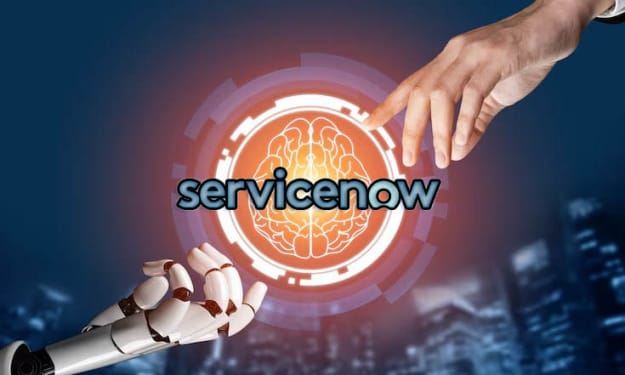Mastering the Digital Transformation Process: A Comprehensive Guide
What is master digital transformation?

Introduction:
Businesses need to adjust to the constantly changing technological world in order to remain relevant. Digital transformation has ended up the foundation of victory, empowering organizations to harness the control of technology to streamline forms, upgrade user experiences, and drive development. However, exploring the digital transformation process can be overwhelming without a clear guide. In this blog, we will explain about the complexities of digital transformation, exploring its key components, challenges and best practices,
Understanding Digital Transformation
Digital transformation is more than just implementing new technologies; it's a holistic approach to reimagining business operations and strategies in the digital age. At its center, digital transformation leverages digital technologies to optimize forms, progress decision-making, and cultivate a culture of development. This transformative travel envelops different viewpoints, including digitizing workflows, embracing cloud computing, grasping information analytics, and integrating emerging technologies like artificial intelligence and the Internet of Things (IoT).
Key Components of Digital Transformation:
Successful digital transformation activities are built on the establishment of key components that drive organizational change and development. These components incorporate:
1. Strategy and Leadership:
Digital Transformation requires solid authority and a clear key vision. Leaders must champion digital initiatives, adjusting them with by and large business destinations and cultivating a culture of development and collaboration.
2. Technology Infrastructure:
An agile and scalable technology is basic for supporting digital transformation efforts. This incorporates modernizing legacy systems, embracing cloud-based arrangements, and contributing to vigorous cybersecurity measures.
3. Data-driven insights
Data is the lifeblood of digital transformation. Organizations must tackle the control of information analytics to pick up noteworthy experiences, improve decision-making, and personalize client experience.
4. Customer Centricity:
Putting the client at the center of digital transformation efforts is significant for driving esteem and competitive advantage. This includes understanding client needs, inclinations, and pain points, and leveraging innovation to convey consistent and personalized experience over all touchpoints.
5. Agile Processes:
Traditional waterfall approaches are not adequate in today's fast-paced advanced environment. Agile methodologies empower organizations to iterate quickly, react to changing market dynamics, and provide value to clients more viably.
Best Practices for Successful Digital Transformation:
To explore the advanced change travel viably, organizations should adopt the the following best practices:
1. Develop a Clear Roadmap: Build up a well-defined digital transformation roadmap with clear objectives, points of reference, and KPIs to track advance and degree victory.
2. Foster a Culture of Innovation: Energize imagination, experimentation, and risk-taking to cultivate a culture of development that drives persistent enhancement and adjustment.
3. Invest in Talent and Training: Create a workforce with the aptitudes and skills required to drive digital transformation initiatives. Contribute to preparing programs and upskilling activities to support ability and fill critical skill gaps.
4.Collaborate Across Departments: Break down silos and cultivate cross-functional collaboration to guarantee arrangement and cooperative energy over offices and business units.
5. Embrace Emerging Technologies: Stay abreast of emerging technologies and patterns that have the potential to disturb your industry. Experiment with unused advances like AI, IoT, and blockchain to open modern openings for development and development.
Challenges and Roadblocks:
While digital transformation holds monstrous potential, it too comes with its reasonable share of challenges and Roadblocks. A few common obstacles incorporate:
● Resistance to Change::
Cultural resistance and organizational inertia can digital transformation efforts. Overcoming resistance requires solid authority, viable communication, and a focus on change management.
● Legacy System:
Outdated legacy frameworks and siloed foundations can hinder development and deftness. Modernizing legacy systems is regularly a complex and time-consuming process but is fundamental for driving digital transformation.
● Talent Gap:
The shortage of gifted ability in ranges such as information analytics, cybersecurity, and emerging technologies poses a critical challenge for organizations setting out on digital transformation journeys. Contributing to preparing and upskilling programs is basic for bridging the talent gap.
What are the key patterns in digital transformation
Artificial Intelligence (AI) and Machine Learning (ML) Integration:
AI and ML continue to play a basic portion in digital transformation initiatives over industries. Organizations are leveraging AI-powered solutions to mechanize forms, analyze endless amounts of data, and decide essential experiences. From predictive analytics and personalized suggestions to chatbots and virtual collaborators, AI and ML progress are changing how businesses work, improve, and engage with customers.
Cloud Computing Adoption
Cloud computing has ended up the backbone of digital transformation, empowering organizations to scale operations, move forward deftness, and decrease costs. Cloud-based solutions enable flexibility, scalability, and accessibility in response to the growing demand for digital collaboration and inaccessible work. With cloud computing solutions ranging from software-as-a-service (SaaS) to platform-as-a-service (PaaS) and infrastructure-as-a-service (IaaS), enterprises are leveraging technology to improve and upgrade their IT infrastructure.
Internet of Things (IoT) Expansion:
The multiplication of connected devices and sensors is fueling the improvement of the Web of Things (IoT) environment. IoT progresses enable organizations to accumulate real-time data, screen assets, and optimize operations over diverse spaces, including manufacturing, healthcare, transportation, and smart cities. With advancements in edge computing and 5G arrangement, organizations are leveraging IoT to drive viability, progress decision-making, and convey personalized experiences.
Cybersecurity Prioritization:
As digital transformation accelerates, cybersecurity has ended up a top need for organizations looking to ensure sensitive data and relieve cyber dangers. With the rise of remote work and digital interactions, the attack surface has amplified, making organizations more powerless to cyberattacks. To address this challenge, organizations are contributing in solid cybersecurity measures, including progressed threat detection, encryption, and awareness training. Moreover, controls such as GDPR and CCPA are driving compliance prerequisites and forming cybersecurity procedures.
Digital Twin Technology
Digital Twin Technology makes virtual reproductions of physical resources, forms, or frameworks, empowering organizations to reenact and optimize execution in real-time. Digital twins are used in different businesses, including manufacturing, healthcare, and smart cities, to improve strides in effectiveness, diminish downtime, and drive advancement.
Conclusion:
Digital transformation is no longer optional; it's fundamental for organizations looking to prosper in today's progressed economy. By grasping advanced advancements, developing a culture of headway, and prioritizing customer-centricity, organizations can unlock new opportunities for growth, effectiveness, and competitiveness. However, victory requires a vital approach, solid authority, and willingness to adapt to change.
FAQS
Q1: What is digital transformation, and why is it important?
Ans: Digital transformation refers to the integration of cutting-edge technologies across all facets of a business, fundamentally altering its operations and how it delivers value to customers.. It's essential for remaining competitive, moving forward productivity, improving client experience, and driving development.
About the Creator
divyeshaegis
Divyesh is working as freelance a Marketing Consultant specializing in blogging, editor and different digital marketing service provider.
Enjoyed the story? Support the Creator.
Subscribe for free to receive all their stories in your feed. You could also pledge your support or give them a one-off tip, letting them know you appreciate their work.






Comments
There are no comments for this story
Be the first to respond and start the conversation.